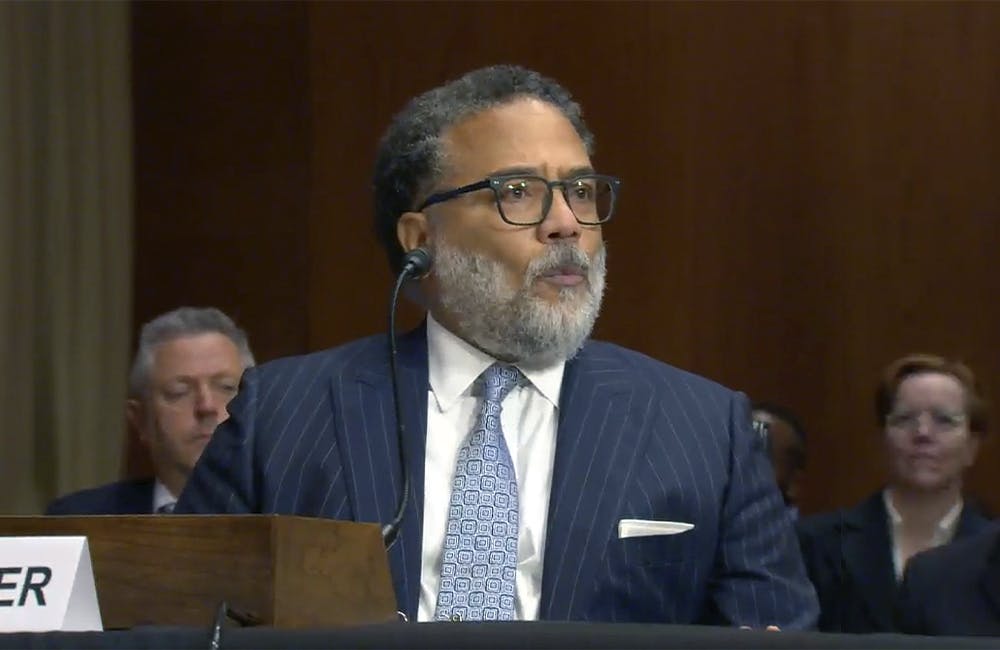How Federal Modernization Fund is Tackling Tomorrow’s Tech Challenges
A new prioritization model for the Technology Modernization Fund ensures government has flexibility to modernize quickly.

Recent changes in government’s funding model for federal IT projects, the Technology Modernization Fund (TMF), now makes it better equipped to address urgent tech challenges, General Services Administration CIO David Shive told GovernmentCIO Media & Research.
“We plan to use these resources to enable the federal government to better respond to the COVID-19 crisis, support economic recovery and to respond to the cybersecurity threats like what we’ve experienced under SolarWinds,” Shive said.
In March, the TMF had received an additional $1 billion boost via the American Rescue Plan, and the additional funds gave agencies more opportunities to take on more complex IT projects. Until recently, industry partners were concerned that the previous process agencies faced in applying for the fund was tedious and deterred them from pursuing such projects.
Last week, GSA and the Office of Management and Budget launched a more flexible process that prioritizes investments to proposals of the following categories: modernizing high-priority systems, cybersecurity, public-facing digital services, and cross-government services and infrastructure.
The update will ensure that federal agencies have access to resources throughout the entire lifecycle of a modernization program, Shive said, and will support a wider variety of project proposals, regardless of whether cost savings are expected. This represents a shift from a “financial return on investment model” to a “mission enablement [return on investment] model,” he added.
This new structure follows calls from technology leaders of both private and public sectors to change the fund’s model to promote cross-agency solutions and expedited modernization. Adding greater flexibility to the repayment model better enables funding for common modernization opportunities and legacy IT, and vastly increases security.
“Technology is deeply embedded into every part of our lives, and it’s only reasonable that the priorities of the [Biden-Harris] administration have IT as a foundation and backbone for many of the things that they want to do,” Shive said. “The fund is going to support investments that move all agencies to the baseline of maturity in cybersecurity.”
With greater support under the TMF for cybersecurity, Shive noted that there will be a large focus on equity to ensure that all agencies are secure.
“If you leave one unprotected, uncovered or unsecured, that creates an avenue for adversaries to come and do some damage. We want to raise the tide for the entire portfolio of federal agencies,” Shive said.
Plus, the emphasis on cross-government collaboration and scalable services means supporting shared services and IT infrastructure.
“We focus our architectures and solutions around what’s fit to mission — a holistic solution approach — that often yields the best tech outcomes as well as business mission outcomes for the agency,” Shive said.
The TMF Board, which oversees the TMF funding process and of which David Shive is a member, leveraged various lessons learned from the previous model.
“We learned a lot over the past couple of years,” Shive said. “We awarded 11 projects across seven agencies … That oversight and transparency allowed for deep and meaningful inspection of investments made versus value derived so that we could see if we were getting the value that we expected.”
Shive outlined three takeaways: an incremental funding model was key to Agile delivery, regular board meetings enabled greater transparency, and the repayment model allowed agencies to have “skin in the game.”
“If there is zero need for a repayment model, that can lend itself to delivery that may not be focused on the entire value proposition,” Shive said. “Having those meetings with the board shined a spotlight on that to make sure agencies were focused in that domain as well as increasing cybersecurity and providing better digital services.”
Moving forward, the TMF will help agencies with various needs uncovered by the pandemic, like increasing the quality of communication between agencies and improving data sharing to support the national response to future challenges.
“If done right, the investment fund will generate enough value that two things will happen: it’s proportionately paid overtime through solid [return on investment] management practice and the mission enablement value of the program is so evident that appropriators on the Hill find it very easy to continue to make investments into the fund,” Shive said.
This is a carousel with manually rotating slides. Use Next and Previous buttons to navigate or jump to a slide with the slide dots
-

Agencies Want to 'Demystify' Generative AI to See Greater Adoption
Managing concerns over generative AI capabilities requires sharing best practices and use cases for workflows.
2m read -

Defense Board Outlines Path for Integrated Digital Ecosystem
Members of DOD's board exploring digital business transformation said that standards and culture are some of the keys to technological change.
4m read -

White House Calls on Software Devs to go 'Memory Safe' for a Secure Future
A new advisory supports the National Cyber Strategy's call for shifting responsibility for cybersecurity to developers.
3m read -

Veterans Legacy Memorial Touted as 'Industry Standard' for Digital Modernization
VA Undersecretary Matthew Quinn told Congress that IT modernization will improve ability to find, connect to records.
4m read








